Joint Entrance Examination (JEE) is an all India common engineering entrance examination conducted for admission to various engineering colleges and courses all over the country. The test comprises two stages – JEE Main and the JEE Advanced.
In 2012, the government-run Central Board of Secondary Education (CBSE) that earlier conducted the AIEEE, announced this common examination that replaced the AIEEE and IIT-JEE. JEE consists of two parts, JEE Main and JEE Advanced. JEE-Main exam is for admission to National Institutes of Technology (NITs), Indian Institutes of Information Technology (IIITs), Centrally Funded Technical Institutes (CFTIs) while the JEE-Advanced is for admission to the Indian Institutes of Technology (IITs). Only the students selected in JEE Mains are eligible for appearing in JEE Advanced. Over 200,000 students are selected each year.
There are some institutes like the Indian Institutes of Science Education and Research (IISERs), Rajiv Gandhi Institute of Petroleum Technology, and the Indian Institute of Science which use the score obtained in JEE Advanced as the basis for admission. These are not participating institutes of central IIT JEE Advanced counselling of which all IITs are the member. Any student who takes admission to IITs cannot appear for the JEE-Advanced exam in the next year, but the same is not the case with IISc, IISER, RGIPT and other institutes as these institutes only use JEE Advanced score for admission.
In September 2013, the IIT Council approved the decision of the Joint Admission Board to continue with the two-phase JEE pattern (“Main” followed by “Advanced”) for IITs in 2014. Joint Seat Allocation Authority (JoSAA) conducted the joint admission process for a total of 23 IITs, ISM, 32 NITs, 18 IIITs and 19 other Government Funded Technical Institutes (GFTIs).[1][2]
As per the reports from Ministry of Human Resource and Development (MHRD) of Government of India, the government is considering to conduct only one common engineering entrance test based on the lines of NEET for all engineering colleges, including private institutions, across India. This proposal is said to be implemented from 2018
JEE Main 2017[edit]
CBSE has conducted JEE Main 2017 this year. Paper & Pen-based exam on April 2, 2017, while the Computer Based Test (CBT) on April 8 and April 9, 2017. Last date of JEE Main 2017 application form registration was extended to 16 January 2017 by the CBSE.[6] Changes for 2017 include:
The top 2,20,000 candidates from JEE Mains 2017 will be eligible to take JEE Advanced 2017. For the admission year 2016-17, CBSE had filtered the top 0.2 million candidates for appearing in JEE Advanced, the second stage of the entrance exam for admissions to IITs.
All aspiring candidates (except candidates from Assam, Meghalaya and Jammu and Kashmir) of JEE Main will mandatorily need Aadhaar card number to fill in JEE Main 2017 online application form.
Candidates belonging to the states of Assam, Meghalaya and Jammu and Kashmir can fill the application form of JEE Main using their Passport Number, ration card number, bank account, any other valid Govt. identity number provided they should select the city of examination in these states only.
JEE Main 2017 All India Ranks will be calculated without the normalized score of class 12th marks now. Till the academic year 2016-17, JEE Mains All India ranks was calculated with JEE Main scores and normalised marks of Class XII in a 60:40 ratio.
To qualify for admissions to NITs, IIITs or GFTIs, aspiring candidates should have secured at least 75% marks in class XII exam or be in the top 20 percentile in the class XII exam conducted by the respective boards. For SC/ST candidates, the eligibility criteria are 65% marks in class 12th.
During Filling online forms for JEE Main 2017, some care needs to be taken like photo size, signature, etc.
JEE Main 2017 results is out on April 27.The Joint Entrance Examination – Advanced (JEE – Advanced), formerly Indian Institutes of Technology Joint Entrance Examination (IIT-JEE) is an annual engineering college entrance examination in India. It is used as the sole admission test by the 23 Indian Institutes of Technology (IITs). The examination is organised each year by one of the various IITs, on a round robin rotation pattern. It has a very low admission rate (about 10,000 in 660,000 in 2012), and was thus recognised as one of the toughest examinations in the world.
In 2013 the exam, originally called the IITJEE, was renamed as JEE – Advanced, along with the AIEEE being renamed JEE – Main.[1] From 2017, IITs will start conducting JEE internationally to give admission to international studentsThe number of students taking the examination increased substantially each year with over 485,000 sitting IIT-JEE 2017. This represented an increase of 30,000 students (6.5%) from 2017
source













![CY_GATE_2019_PHYSICAL_SPECTROSCOPY_[ELECTRONIC_BASIC]_All IN ONE_[Short_Trick]_2018-19_PART_1ST - Videos](https://trends.edugorilla.com/wp-content/uploads/sites/8/2018/08/cy_gate_2019_physical_spectroscopy_electronic_basic_all-in-one_short_trick_2018-19_part_1st-218x150.jpg)



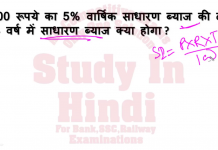


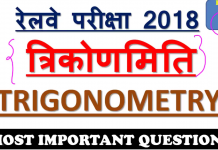
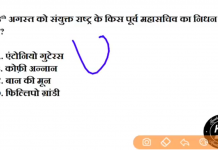
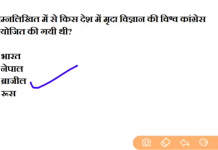
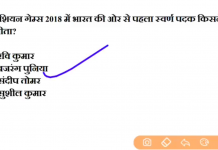





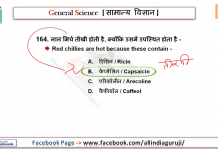


![24 August 2018 – The Indian Express Newspaper Analysis हिंदी में – [UPSC/SSC/IBPS] Current affairs - Videos](https://trends.edugorilla.com/wp-content/uploads/sites/8/2018/08/a520-218x150.png)
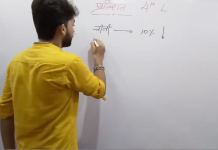



I love you! Do you remember me?
nice stuff